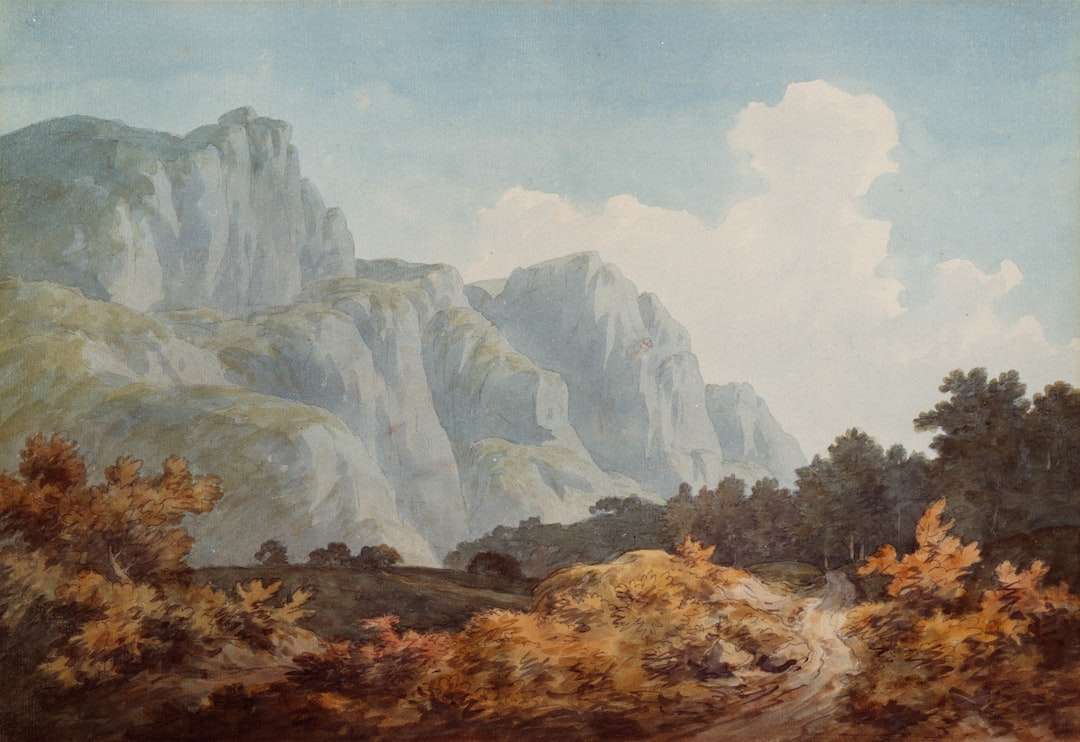Unpacking the Layers: Symbolism of Performance Art

Performance art is a form of artistic expression that combines elements of theater, visual art, and dance. It is a medium in which the artist uses their body, actions, and presence to convey a message or explore a concept. Unlike traditional art forms, performance art is ephemeral and often takes place in real-time, with the audience witnessing the creation of the artwork.
The history of performance art can be traced back to the early 20th century, with artists such as Dadaists and Futurists experimenting with unconventional forms of expression. However, it was in the 1960s and 1970s that performance art gained significant recognition and popularity. Artists like Marina Abramović, Yoko Ono, and Joseph Beuys pushed the boundaries of what was considered art, using their bodies as a canvas for their ideas.
Symbolism plays a crucial role in performance art. Artists use symbols to convey meaning and evoke emotions in their audience. These symbols can be visual, auditory, or physical, and are often open to interpretation. The use of symbolism allows artists to communicate complex ideas and challenge societal norms in a way that is both thought-provoking and engaging.
Unpacking the Layers: Understanding the Meaning Behind Performance Art
Performance art is often open to multiple interpretations, as it relies heavily on context and the viewer’s perspective. What may seem like a simple action or gesture can carry deep meaning when placed within a specific context. For example, an artist lying motionless on the ground may be seen as a symbol of vulnerability or powerlessness, depending on the surrounding elements and the viewer’s own experiences.
The importance of context in interpreting performance art cannot be overstated. The same action performed in different settings can have completely different meanings. For instance, an artist walking slowly across a crowded city street may be seen as an act of rebellion or resistance, while the same action performed in a quiet park may be interpreted as a meditative or contemplative act.
Examples of performance art and their meanings are abundant. Marina Abramović’s “The Artist is Present” is a prime example of how performance art can convey deep emotions and connect with the audience on a profound level. In this piece, Abramović sat silently in a chair for hours at a time, inviting visitors to sit across from her and make eye contact. The simplicity of the action allowed for a powerful exchange of energy and emotion between the artist and the audience, creating a sense of intimacy and vulnerability.
The Role of the Body in Performance Art: Symbolism and Significance
The body is a powerful tool for expression in performance art. Artists use their bodies to convey emotions, challenge societal norms, and explore personal and collective experiences. The movements and gestures of the body can carry deep symbolism and evoke strong reactions from the audience.
Different body movements and gestures can have different symbolic meanings. For example, slow, deliberate movements may symbolize introspection or contemplation, while fast, erratic movements may represent chaos or urgency. The use of stillness or immobility can convey a sense of vulnerability or powerlessness, while fluid and graceful movements may evoke feelings of freedom or liberation.
Examples of performance art that use the body as a symbol are numerous. In her piece “Rhythm 0,” Marina Abramović invited the audience to interact with her body using various objects placed on a table. The performance quickly escalated into an intense and sometimes violent interaction, highlighting the power dynamics between the artist and the audience. By using her body as a symbol of vulnerability, Abramović challenged societal norms and explored themes of trust, consent, and boundaries.
The Use of Props and Objects in Performance Art: Exploring their Symbolic Value
Props and objects play an important role in performance art, as they can enhance the symbolic value of the artwork and provide a tangible element for the audience to engage with. Artists carefully select and incorporate props and objects into their performances to convey specific meanings and evoke certain emotions.
The symbolism of props and objects in performance art can vary greatly depending on their context and the artist’s intention. For example, a chair may symbolize authority or power when placed on a stage, while a broken chair may represent decay or destruction. Similarly, a flower can symbolize beauty and fragility, while a wilted flower may represent loss or death.
Examples of performance art that use props and objects as symbols are plentiful. In his piece “The Physical Impossibility of Death in the Mind of Someone Living,” Damien Hirst famously displayed a shark preserved in formaldehyde. The shark, a symbol of power and danger, was stripped of its natural habitat and presented as an object of contemplation. The use of the shark as a prop challenged traditional notions of art and forced the audience to confront their own mortality.
Performance Art and Identity: How it Reflects and Challenges Social Norms
Identity plays a significant role in performance art, as artists often use their own experiences and identities to explore social issues and challenge societal norms. Performance art provides a platform for marginalized voices to be heard and for alternative narratives to be shared.
By using their bodies, actions, and presence, artists can address issues such as gender, race, sexuality, and class. They can challenge stereotypes, question societal expectations, and create spaces for dialogue and understanding. Performance art allows artists to reclaim their identities and assert their agency in a world that often seeks to silence them.
Examples of performance art that address identity and social norms are numerous. In her piece “The Dinner Party,” Judy Chicago celebrated the achievements of women throughout history by creating a large-scale installation featuring a triangular table with place settings for 39 notable women. The piece challenged the male-dominated art world and highlighted the contributions of women throughout history. By reclaiming and celebrating women’s identities, Chicago challenged societal norms and paved the way for future generations of female artists.
The Role of Audience Participation in Performance Art: Symbolism and Interaction

Audience participation is a crucial element of performance art, as it allows for a direct exchange of energy and emotion between the artist and the viewer. By involving the audience in the creation of the artwork, performance artists create a sense of shared experience and challenge traditional notions of passive spectatorship.
The symbolism of audience participation lies in its ability to break down barriers between the artist and the viewer, creating a sense of connection and shared responsibility. It allows for a collective experience that can be transformative and empowering for both the artist and the audience.
Examples of performance art that involve audience participation are numerous. In his piece “The Artist is Present,” Marina Abramović invited visitors to sit across from her and make eye contact. This simple act of participation created a profound connection between the artist and the audience, allowing for a shared experience of vulnerability and intimacy. By involving the audience in her performance, Abramović challenged traditional notions of distance and detachment in art.
The Importance of Space and Location in Performance Art: Symbolism and Context
Space and location play a crucial role in performance art, as they provide a backdrop for the artwork and contribute to its overall meaning. The choice of space can enhance or subvert the symbolism of a performance, creating layers of meaning that are unique to each location.
Different spaces and locations can carry different symbolic meanings. For example, a gallery or museum may symbolize institutional authority or legitimacy, while a public park may represent freedom or accessibility. Similarly, an abandoned building may evoke feelings of decay or neglect, while a pristine white room may represent purity or neutrality.
Examples of performance art that use space and location as symbols are abundant. In his piece “The Gates,” Christo and Jeanne-Claude installed thousands of saffron-colored fabric panels along the pathways of New York City’s Central Park. The choice of location, a public park in the heart of the city, symbolized accessibility and inclusivity. By transforming the space with their artwork, the artists challenged traditional notions of art and engaged with a wide audience.
The Use of Sound and Music in Performance Art: Symbolism and Emotional Impact
Sound and music play a significant role in performance art, as they can enhance the emotional impact of the artwork and create a multisensory experience for the audience. Artists carefully select and incorporate sound and music into their performances to convey specific moods, evoke certain emotions, and create a sense of atmosphere.
The symbolism of sound and music in performance art can vary greatly depending on the artist’s intention and the context of the performance. For example, silence may represent introspection or contemplation, while loud or dissonant sounds may evoke feelings of chaos or discomfort. Similarly, a soft melody may create a sense of calm or nostalgia, while a rhythmic beat may inspire movement or energy.
Examples of performance art that use sound and music as symbols are plentiful. In her piece “Cut Piece,” Yoko Ono invited the audience to cut pieces of her clothing off her body while she sat silently on stage. The only sound in the performance was the sound of scissors cutting through fabric, creating a tense and uncomfortable atmosphere. The use of sound heightened the emotional impact of the artwork and added another layer of symbolism to the performance.
Performance Art and Politics: How it Addresses Social and Political Issues
Performance art has long been used as a tool for addressing social and political issues. Artists have used their bodies, actions, and presence to challenge oppressive systems, raise awareness about injustice, and promote social change. Performance art provides a platform for marginalized voices to be heard and for alternative narratives to be shared.
By using their bodies as a canvas for their ideas, artists can address issues such as inequality, discrimination, and human rights abuses. They can challenge the status quo, question authority, and create spaces for dialogue and resistance. Performance art allows artists to reclaim their agency and assert their power in a world that often seeks to silence them.
Examples of performance art that address social and political issues are numerous. In her piece “The Silent University,” Ahmet Öğüt created a platform for refugees, asylum seekers, and migrants to share their knowledge and skills with the public. The performance challenged the dehumanization of refugees and highlighted the contributions they make to society. By giving a voice to those who are often silenced, Öğüt used performance art as a means of resistance and empowerment.
The Power and Significance of Symbolism in Performance Art
In conclusion, symbolism plays a crucial role in performance art. Artists use symbols to convey meaning, evoke emotions, and challenge societal norms. The body, props and objects, audience participation, space and location, sound and music – all these elements contribute to the overall symbolism of a performance.
Performance art has the power to transcend boundaries, provoke thought, and inspire change. It provides a platform for marginalized voices to be heard and for alternative narratives to be shared. By using their bodies, actions, and presence, artists can address social and political issues, challenge oppressive systems, and create spaces for dialogue and resistance.
As viewers of performance art, we have the opportunity to engage with these powerful artworks, explore their symbolism, and reflect on their meaning. By appreciating and supporting performance art, we can contribute to a more inclusive and diverse artistic landscape. Let us embrace the power of symbolism in performance art and continue to explore its significance in our society.
If you’re interested in exploring the symbolism behind performance art, you might also find this article on the symbolism of the moon fascinating. The moon has long been associated with various meanings and interpretations, from femininity and intuition to cycles and transformation. Understanding the symbolism of the moon can provide valuable insights into the deeper layers of meaning in performance art. To learn more about the symbolism of the moon, check out this article on Symbolism Hub.
FAQs
What is performance art symbolism?
Performance art symbolism is a form of art that uses the human body as a medium to convey a message or idea through symbolic gestures, movements, and actions.
What are the origins of performance art symbolism?
Performance art symbolism emerged in the 1960s as a response to the traditional forms of art, such as painting and sculpture. It was influenced by the avant-garde movements of Dadaism, Surrealism, and Fluxus.
What are the key elements of performance art symbolism?
The key elements of performance art symbolism include the use of the body as a medium, the incorporation of symbolic gestures and movements, the use of props and costumes, and the interaction with the audience.
What are some examples of performance art symbolism?
Some examples of performance art symbolism include Marina Abramovic’s “The Artist is Present,” where she sat silently across from visitors at the Museum of Modern Art in New York City, and Yoko Ono’s “Cut Piece,” where she invited the audience to cut off pieces of her clothing.
What is the purpose of performance art symbolism?
The purpose of performance art symbolism is to challenge the traditional forms of art and to create a new form of expression that is more interactive and engaging for the audience. It also aims to convey a message or idea through symbolic gestures and movements.
What are the criticisms of performance art symbolism?
Some criticisms of performance art symbolism include the lack of skill or technique required, the reliance on shock value, and the tendency to be self-indulgent or narcissistic. It is also often seen as inaccessible or pretentious to the general public.





